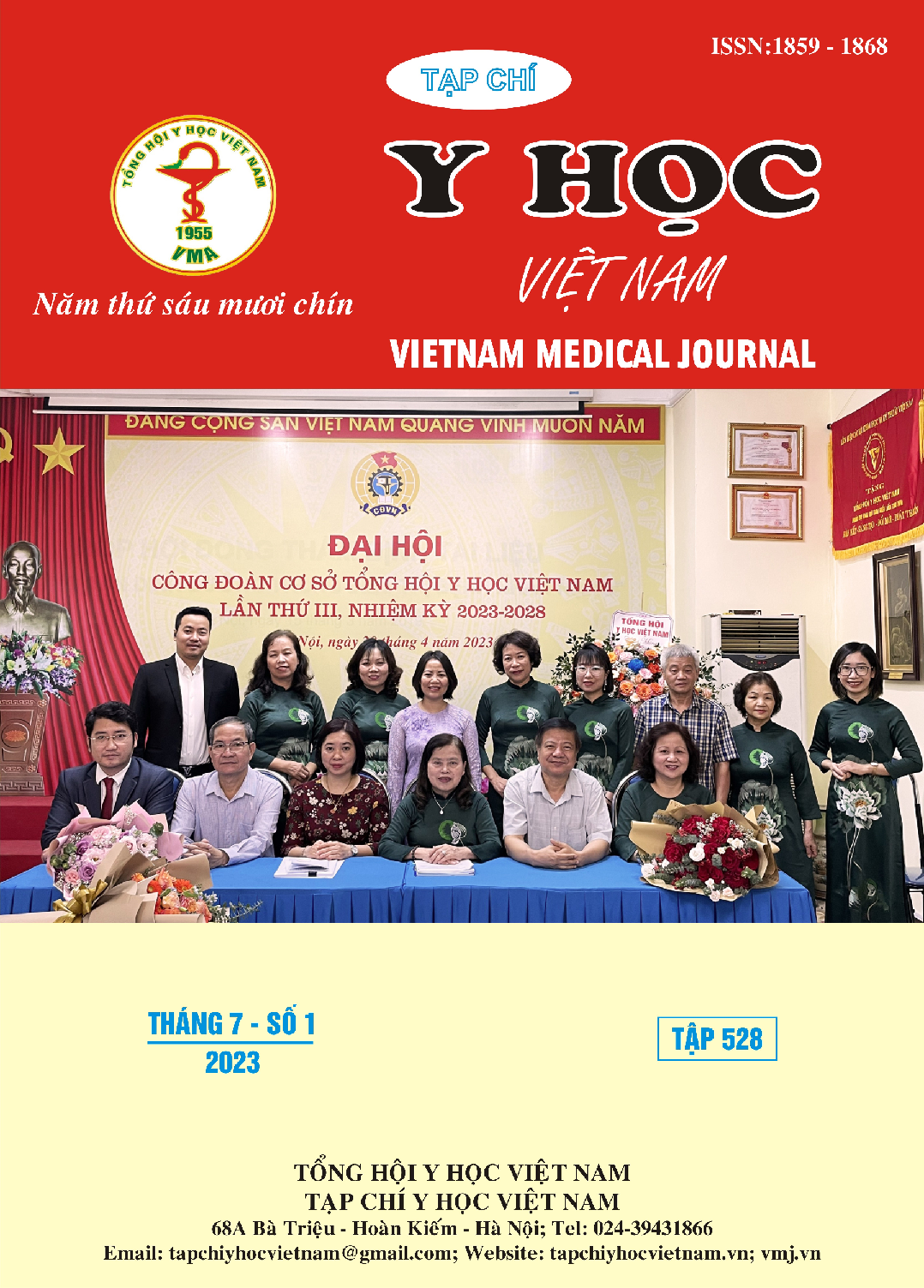RESEARCH ON SOME HISTOLOGICAL AND IMMUNOHISTOCHEMICAL FEATURES OF PROSTATE CANCER PATIENTS IN THE NORTH MOUNTAINOUS AREA OF VIETNAM
Main Article Content
Abstract
Background: Histopathological diagnosis of prostate cancer is mainly based on conventional histological criteria, but in some difficult cases, the immunohistochemical examination is needed for support. This study aimed to evaluate the histopathological characteristics, expression of some immunological markers, and their correlation with Gleason scores in patients with prostate carcinoma in some northern provinces of Vietnam. Method: A cross-sectional descriptive study of 75 patients diagnosed with prostate cancer at Thai Nguyen Central General Hospital, from 1/2016 to 6/2022. The histological features, expression of some immune markers, and correlation with Gleason scores were analyzed. Results: Follicular adenocarcinoma 46.7%, Gleason 8-10 points accounted for 39.8%. Nerve invasion accounted for 24.0%. The rate of disclosure with the AMACR marker (P504s) was 93.3%, and the group with a Gleason score of 8-10 was 57.1%. The rate of disclosure with ERG was 33%, and the group with a Gleason score ≤7 accounted for 75%. The average Ki67 index was 14.1%, with a median of 10%, and 67.4% of cases with Gleason scores of 8-10 had a high expression of Ki67. Conclusion: Prostate cancer mainly occurs in cystic tumor type, with high rates of Gleason scores of 8-10 and nerve invasion. The higher the Gleason score, the higher the rate of nerve invasion. AMACR expression is mainly found in the group with Gleason scores of 8-10, while ERG expression is high in the group with Gleason scores ≤7. The higher the Gleason score, the higher the Ki67 expression. There is no correlation between Ki-67 expression and PSA.
Article Details
Keywords
Prostate cancer, Immunohistochemistry, Cancer diagnosis.
References
2. Sung H, Ferlay J, Siegel RL, et al. Global Cancer Statistics 2020: GLOBOCAN Estimates of Incidence and Mortality Worldwide for 36 Cancers in 185 Countries. CA Cancer J Clin. 2021;71(3):209-249. doi:10.3322/caac.21660
3. Ferlay J, Soerjomataram I, Dikshit R, et al. Cancer incidence and mortality worldwide: sources, methods and major patterns in GLOBOCAN 2012. Int J Cancer. 2015;136(5):E359-386. doi:10.1002/ ijc.29210.
4. Moch H, Cubilla AL, Humphrey PA, Reuter VE, Ulbright TM. The 2016 WHO Classification of Tumours of the Urinary System and Male Genital Organs-Part A: Renal, Penile, and Testicular Tumours. Eur Urol. 2016; 70(1): 93 - 105 doi:10.1016/j. eururo.2016
5. Ngô Quốc Đạt. Áp dụng điểm Gleason trong chẩn đoán carcinom tuyến của Tuyến tiền liệt. Trường Đại học y dược Thành phố Hồ Chí Minh; 2006.
6. Lê Văn Kỳ. Đặc điểm mô bệnh học và sự bộc lộ một số dấu ấn hóa mô miễn dịch trong chẩn đoán ung thư biểu mô. Accessed September 28, 2022.
7. Phạm Quốc Thắng NST, Phan Đặng Anh Thư và cộng sự. Áp dụng hệ thống phân loại Gleason theo ISUP 2014 trong chẩn đoán Carcinom tuyến tiền liệt.
8. Jiang Z, Woda BA. Diagnostic utility of α-methylacyl CoA racemase (P504S) on prostate needle biopsy. Adv Anat Pathol. 2004;11(6):316-321.
9. Hashmi AA, Khan EY, Irfan M, et al. ERG oncoprotein expression in prostatic acinar adenocarcinoma; clinicopathologic significance. BMC Res Notes. 2019;12(1):35. doi:10.1186/s13104-019-4090-x


